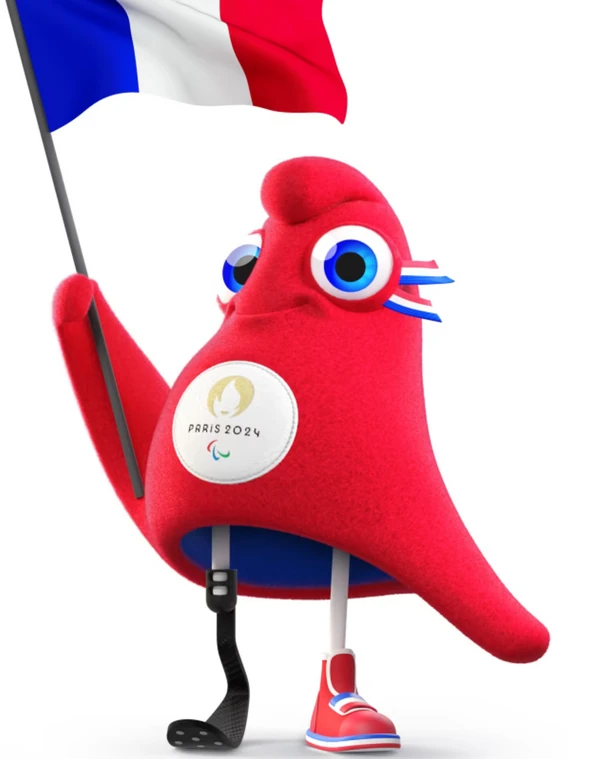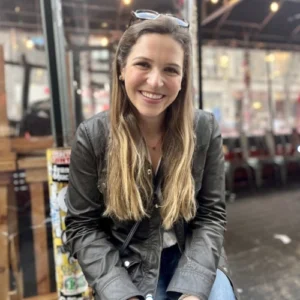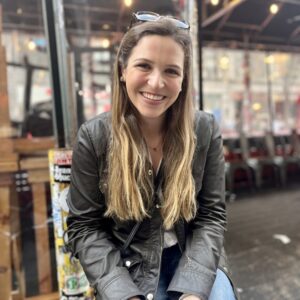
I had just sat down to watch a Paralympic boccia game when a four-year-old girl seated in front of me turned around to wave. She was looking right at me, holding up her Paris Paralympics mascot—a red Phryges stuffed animal with big bulging eyes, and, most notably, a prosthetic running leg. The girl pointed to the Phryges’ running leg, pointed at my prosthetic leg, and then gave her mascot a big hug. Later on, she would try asking me questions. I didn’t know enough French to be able to respond, but it didn’t matter. The point was that we were sitting there, at the Games, and she was embracing—quite literally—a body type different from her own.
That was one invaluable effect of the Games: increasing the visibility of people with disabilities. Children only know what they see. If they don’t see us, how will they know about us? For those next two hours, that four-year-old girl and I watched athletes in wheelchairs use their heads to control the exact line of the boccia ball. Soon enough, the girl’s brother tapped me on the leg to show me his sketches of some of the prosthetic legs, wheelchairs, and eyefolds he had seen that week.
Throughout my time in Paris, I bought tickets to see different events every day. Some were sports I’d never seen live before—wheelchair boccia, para rowing, sitting volleyball, wheelchair basketball. Then there were more familiar competitions like track and field, swimming, and wheelchair rugby. I was excited to see the Games, but I also wanted do my part in having the athletes be seen.
Sometimes that took a sizeable commitment. My mom and I took a long Metro ride to the suburbs for the para rowing event. Volunteers guided us from the Metro station to the water, and while we were walking it began to rain. We had no umbrellas, and the closer we got to the water, the more we noticed small crowds walking back. Were we supposed to turn back? We decided to trust the volunteers who assured us that the rowers would carry on.
When we arrived at the water, I saw that for every person that had left, about three had stayed behind. Hundreds of us huddled under the bleachers in ponchos waiting out the rain. When the sun finally crept in, the seats filled up in a hurry. I watched athletes with cerebral palsy move their oars in perfect synchrony, all the way toward a medal.
Walking into the track arena was its own form of exhilaration. I saw athletes with cerebral palsy sprint. I saw lower-limb amputees long jump. I saw visually impaired athletes run long distances, tethered to their guides. I Googled my way through classifications to understand each category of disability. What was T63? T12? T42? I was eager to appreciate the nuances. While the runners circled the track, javelins and shotputs were being thrown across the field, over and over again. These athletes had strengthened every part of the body needed to excel in their sport, regardless of any physical disability classification. I waved my US flag as spectators around me waved flags for Canada, Japan, Great Britain, Greece. When the action brought me up out of my seat, the change in posture barely even registered. The energy in that stadium elevated us all.
At the natatorium, when one of the French athletes took the lead in her final 50 meter lap, I would guess that every single French citizen at the venue stood up chanting. They’d covered their faces in blue, white, and red paint, donning wigs of the same color. There were shouts, tears, song. “That is how you rally,” I said to my Mom. Then I joined in the tears. I had never seen a crowd this large cheering for anyone with a physical disability.
Nearly a month later, I can still hear the rugby wheelchairs clanging and flipping over in the battle for position; the basketballs swishing through the net as wheelchairs sprinted up and down the court; the grunt behind every sitting volleyball serve; the cheers of 70,000 people practicing a crowd wave in the track and swimming venues; and the volunteers telling me they were sold out of the Phyrges. Sold out.
The Paris 2024 Paralympics set a new standard for viewership and interest in adaptive sports. We support our Paralympic athletes by showing up. And that’s what people did–parents with young children, teachers with their classes, volunteers with their families. We normalize different body types by creating avenues for them to be seen. The world won’t understand every nuance of the lived experience for those of us with disabilities. But the world ought to see what we are capable of, not in spite of disability, but with it.
Alexandra Capellini is a resident physician at the University of Michigan Hospital in Ann Arbor.








